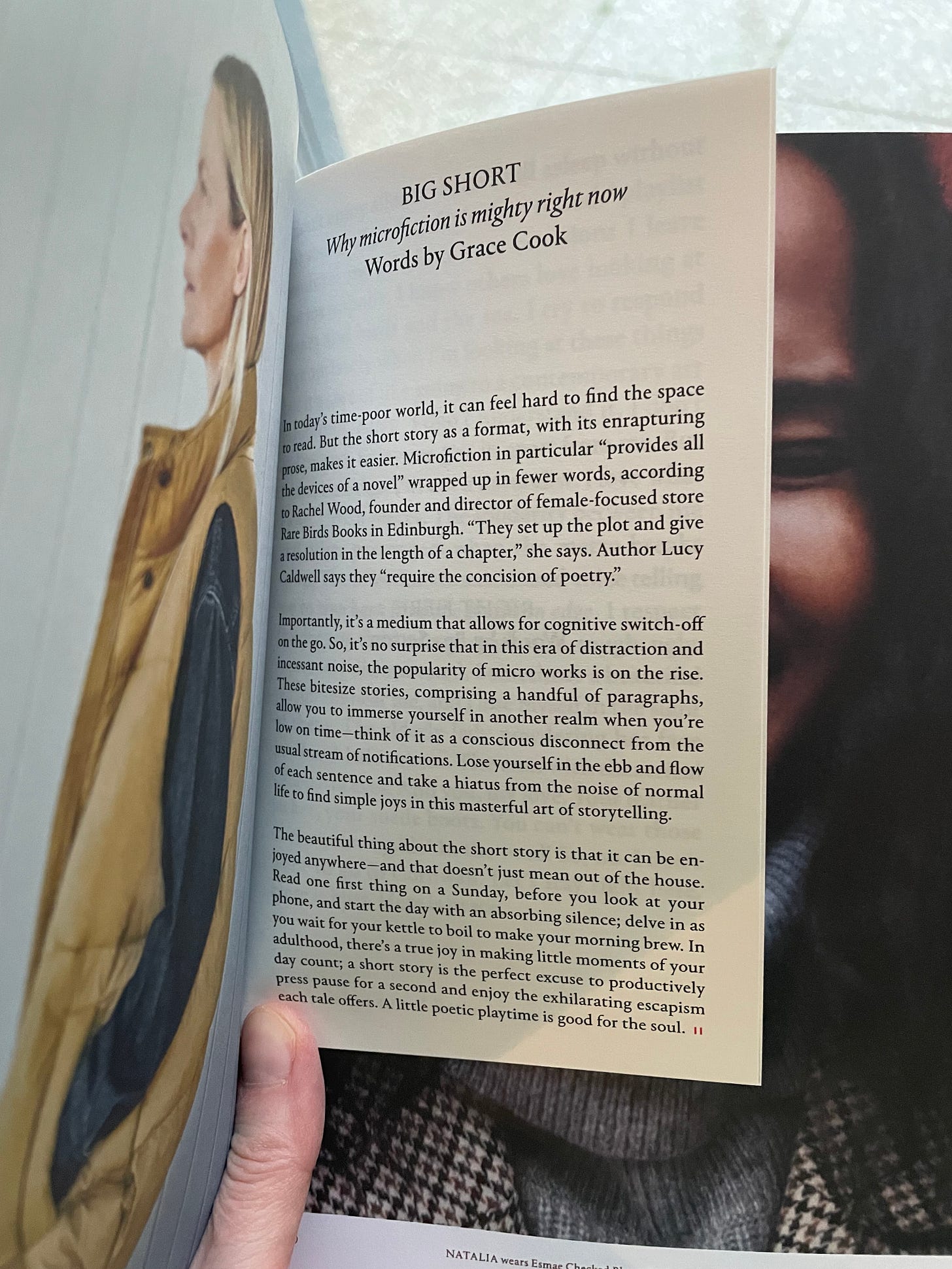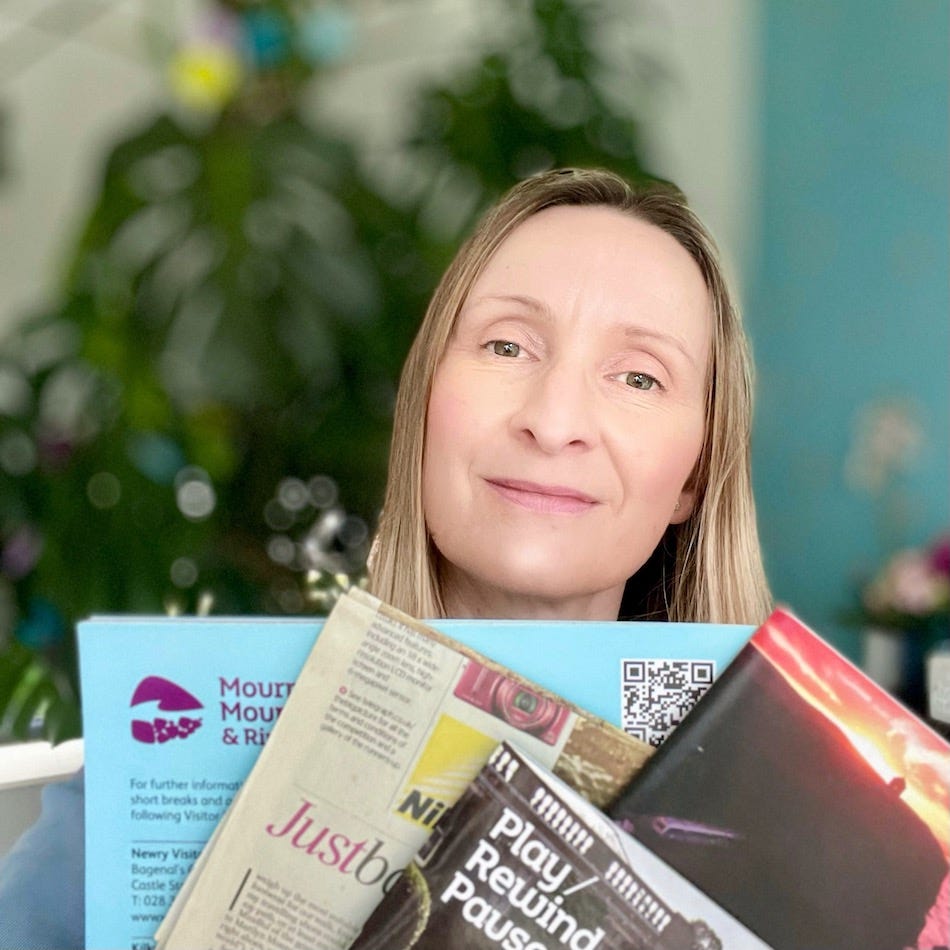Would it surprise you to know that 60% of the under 30s have never used a telephone box?
On my regular walking route, we pass a red phone box. Probably still operational, but I haven’t spotted anyone using it for about 20 years. We often discuss repurposing ideas. Ironically, our favourite option is an even lower-tech book exchange.
Meanwhile the Hush winter catalogue just hit my doormat with an unfamiliar thump. Its digital equivalent this season also has all the signs of an analogue revival - polaroid cameras, vinyl records and 70s patterned sofas. The print catalogue itself contains at least as much “content” as sales copy. It opens with a poem and features microfiction between the pages of clothes, all designed to encourage buyers to hold the brand in their hands a bit longer.
Print media dominated when Gen X women like me grew up. From childhood comics, to teen magazines and shopping catalogues, our print journey took us from Twinkle to Jackie via Great Universal.
I‘ve still got a well-thumbed London A to Z, yet 42% of the under 30s have never used a printed road map (according to the YouGov survey that also revealed the phone box stats above). And do you remember the excitement of signing your first cheque?
So when I see a piece of marketing like this season’s Hush catalogue, I start to feel the same way as I do about fashion. I’ve seen things shift massively from print to digital, and now I see a smaller, subtler shift towards analogue again. I’m old enough now to have experienced ‘new’ fashion trends the first time. I’ve seen bootcut jeans off twice and jumbo cords probably at least three times. And now those Sloaney wraps from the early 90s have just been revitalised in the fashion pages as some type of cape/poncho getup for winter 2023. Back then we wore them with those poppered, wedgie-maker bodysuits that already made a comeback a few years ago. I don’t feel at all nostalgic for them.
And have you seen Physical on Apple TV? Here’s the promo blurb - “Sheila Rubin is a quietly tormented housewife in ’80s California. Behind closed doors, she battles extreme personal demons and a vicious inner voice. But things change when she discovers aerobics, sparking a journey toward empowerment and success.”
Quietly tormented indeed. It’s a very dark comedy with leotards and leg warmers - highly recommended.
So could my little universe be giving me a sign that slow media is back? It’s certainly on the trendspotters’ radar - here’s Wunderman Thompson’s opinion on the rise of Unhurried Media and insight consultancy Canvas8’s article on the print media revival.
A 2022 YouGov survey found that people in UK are doing their best to keep their hands on print. 63% currently send greetings cards and 55% send letters by post. 25% buy a printed newspaper and 20% still send postcards.
The Accenture Life Trends 2024 Report predicts that low-tech life will not exactly become mainstream, but the growing desire for more analogue interactions is worth noting -
“We expect to see more people trying to boost their own personal resilience against the power of technology … We’re already seeing users regulate their behavior. Some use screen time management tools … others switch to alternative, less demanding platforms or use more nostalgic tech - dumb phones, film cameras, tape players - as a route to more meaningful, intentional and soulful interactions.”
Print X nostalgia marketing is an appealing collab
Nostalgia marketing is a strategy that uses nostalgic cues, like imagery, music or pop culture icons, to make positive memories pop up in customers’ minds. We feel more connected to others when we share nostalgic memories like these. That familiarity is a comforting way to reinforce our identity.
For marketers, nostalgia can boost awareness and sales in several ways. It can increase brand awareness and recall, as well as build trust. When consumers feel a nostalgic connection with a brand, they are more likely to perceive it as being authentic and trustworthy.
And what if that nostalgia comes in printed form? Brands that can afford to print and post their marketing also build credibility by signalling their success.
Will slow media culture have an impact on marketers?
Culturally, slow media is surely reviving. But workwise, for me - not just yet. I’ve been a copywriter for 21 years, and cut my teeth writing printed sales packs, brochures, flyers, guide books, exhibition signage and corporate magazines. The stakes were higher back in the print era. Any typo you missed would be there until the next print run.
And yet regretfully, every word I’ve written at work since 2018 has been digital.
I love blogging (Substacking?) and writing web copy, but I’m impatient for another print copywriting project. Why?
Because slow media - content that takes more time and attention to consume - is more memorable. Same for printed materials that you can hold in your hand. The printed page is the ultimate low-tech immersive medium.
It’s a perfect way to connect with nostalgic (dare I say more mature?) buyers. That’s why, despite the expense, Boden revived its catalogue in 2023 after a fall in turnover.
How can marketers make the most of a nostalgic print revival?
The slow media movement is an opportunity for brands to use print alongside other digital marketing channels to create a more holistic marketing strategy. Yes, balance print output with your sustainability goals, but give us some content that we can handle and savour for longer.
We assign more value to something we hold in our hands than something we see on a screen. And isn’t it more relaxing to flick through a printed document than to scroll (which we increasingly associate with work)? And then there’s print’s Keep Don’t Delete factor. We’re more likely to keep a printed communication, page corners folded over, than we are to return to any digital message.
Marketing through print is a multi-sensory experience, where buyers are influenced by the feel of the paper as well as by sight.
Buyers can also share catalogues or zines in the same way as books, thus building community through word of mouth. It’s just as valuable as a digital share, even if marketers can’t track the data as efficiently.
At a recent summit, I heard from freelance champion Amy Posner, who revealed that her first clients came via an old-style snail mail campaign. She sent out a handwritten letter and personalised chocolate bar, in an envelope with eye-catching postage stamps. The campaign drew in two year’s worth of clients. It reminded me that I did something similar back when I started out (minus the chocolate). My simple, hand-addressed postcard was enough to snag my first few copywriting clients back in 2001.
Something to think about for 2024?








Those bodysuits 😅 ... wedgiemaker indeed!